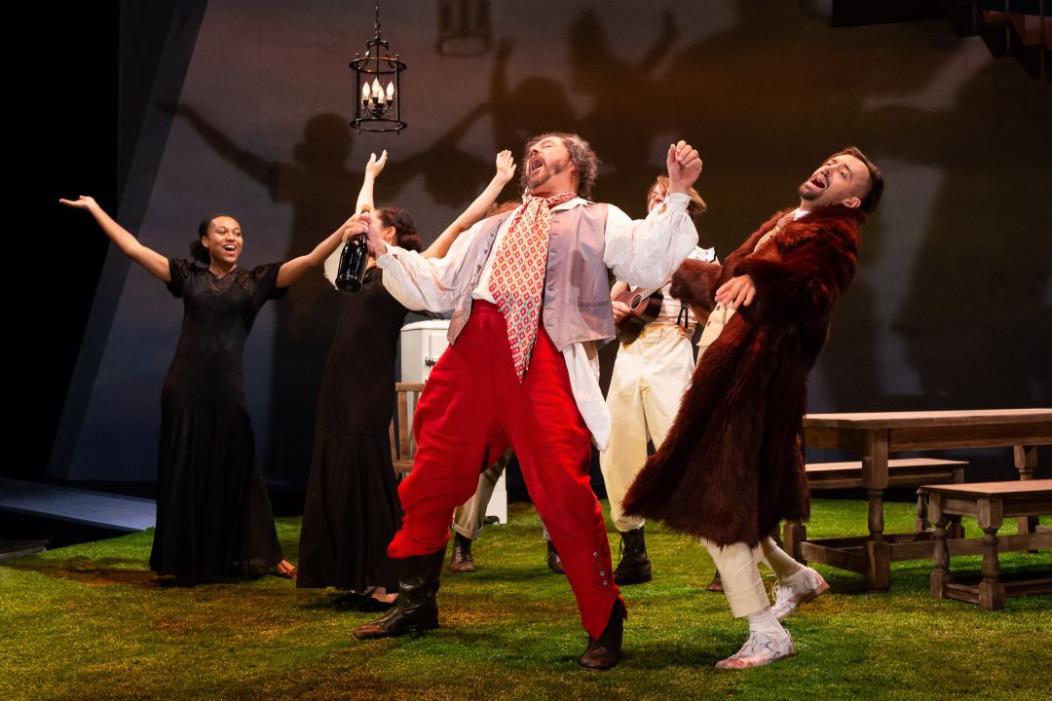What Are the Different Interpretations of Twelfth Night Throughout History?
Twelfth Night, one of William Shakespeare's most beloved comedies, has captivated audiences for centuries with its witty dialogue, mistaken identities, and exploration of love and self-discovery. Throughout history, the play has been interpreted in various ways, reflecting the changing cultural, social, and political contexts in which it has been performed and studied.

I. Historical Interpretations
Early Modern Period (16th-17th Century):
- Twelfth Night as a festive comedy: During its initial performances in the early 1600s, Twelfth Night was primarily seen as a lighthearted entertainment, emphasizing revelry, disguise, and mistaken identities.
- Moralistic interpretations: Some early critics and audiences also interpreted the play as a moral allegory, focusing on lessons about love, deception, and self-knowledge.
Romantic Period (18th-19th Century):
- Emphasis on the play's poetic beauty: During the Romantic era, critics and audiences began to appreciate Twelfth Night's lyrical language and emotional depth, emphasizing its poetic beauty and emotional resonance.
- Idealization of love and idealized characters: Romantic interpretations often idealized the play's characters and their love stories, portraying them as paragons of virtue and passion.
Victorian Era (19th Century):
- Focus on moral lessons: In the Victorian era, interpretations of Twelfth Night often focused on its moral lessons and its depiction of social hierarchy, reflecting the conservative values of the time.
- Censorship: Certain elements of the play, such as cross-dressing and sexual innuendo, were deemed inappropriate and censored in Victorian productions.
Early 20th Century:
- Modernist interpretations: Modernist critics and artists began to explore the play's ambiguity, irony, and psychological complexity, challenging traditional interpretations.
- Exploration of gender roles and sexual identity: Early 20th-century interpretations also began to explore the play's themes of gender roles and sexual identity, reflecting the changing social attitudes towards these issues.
II. Contemporary Interpretations
Postmodern Interpretations (Late 20th Century to Present):
- Deconstruction of traditional interpretations: Postmodern interpretations deconstruct traditional readings of the play, focusing on power dynamics, subversion, and the performative nature of identity.
- Exploration of themes such as colonialism, race, and class: Postmodern interpretations also explore themes such as colonialism, race, and class, examining how these factors intersect with the play's themes of love, deception, and self-discovery.
Feminist Interpretations:
- Focus on the play's portrayal of women: Feminist interpretations focus on the play's portrayal of women and their agency, examining how the play challenges or reinforces patriarchal structures.
- Examination of gender roles, power dynamics, and female desire: Feminist critics analyze gender roles, power dynamics, and female desire in the play, highlighting the complex experiences of women in the play's world.
Queer Interpretations:
- Exploration of same-sex desire and gender fluidity: Queer interpretations explore same-sex desire and gender fluidity in the play, challenging heteronormative assumptions and examining the play's potential queer subtexts.
- Analysis of how the play challenges or reinforces heteronormative assumptions: Queer critics analyze how the play challenges or reinforces heteronormative assumptions, shedding light on the play's significance in LGBTQ+ history and culture.
Postcolonial Interpretations:
- Examination of the play's colonial context: Postcolonial interpretations examine the play's colonial context and its representation of cultural differences, exploring how the play reflects and critiques the power dynamics between colonizer and colonized.
- Analysis of power dynamics between colonizer and colonized: Postcolonial critics analyze the power dynamics between colonizer and colonized in the play, highlighting the ways in which the play engages with issues of imperialism and cultural hegemony.
Conclusion
The diverse interpretations of Twelfth Night throughout history reflect the play's enduring appeal and its ability to resonate with different audiences across time. From its initial performances as a festive comedy to its contemporary interpretations that explore complex themes of gender, sexuality, and colonialism, Twelfth Night continues to challenge, entertain, and inspire audiences worldwide.
The ongoing nature of interpretation ensures that Twelfth Night will continue to be a subject of debate and discussion for generations to come, as new perspectives and contexts shed light on the play's timeless themes and characters.
YesNo

Leave a Reply